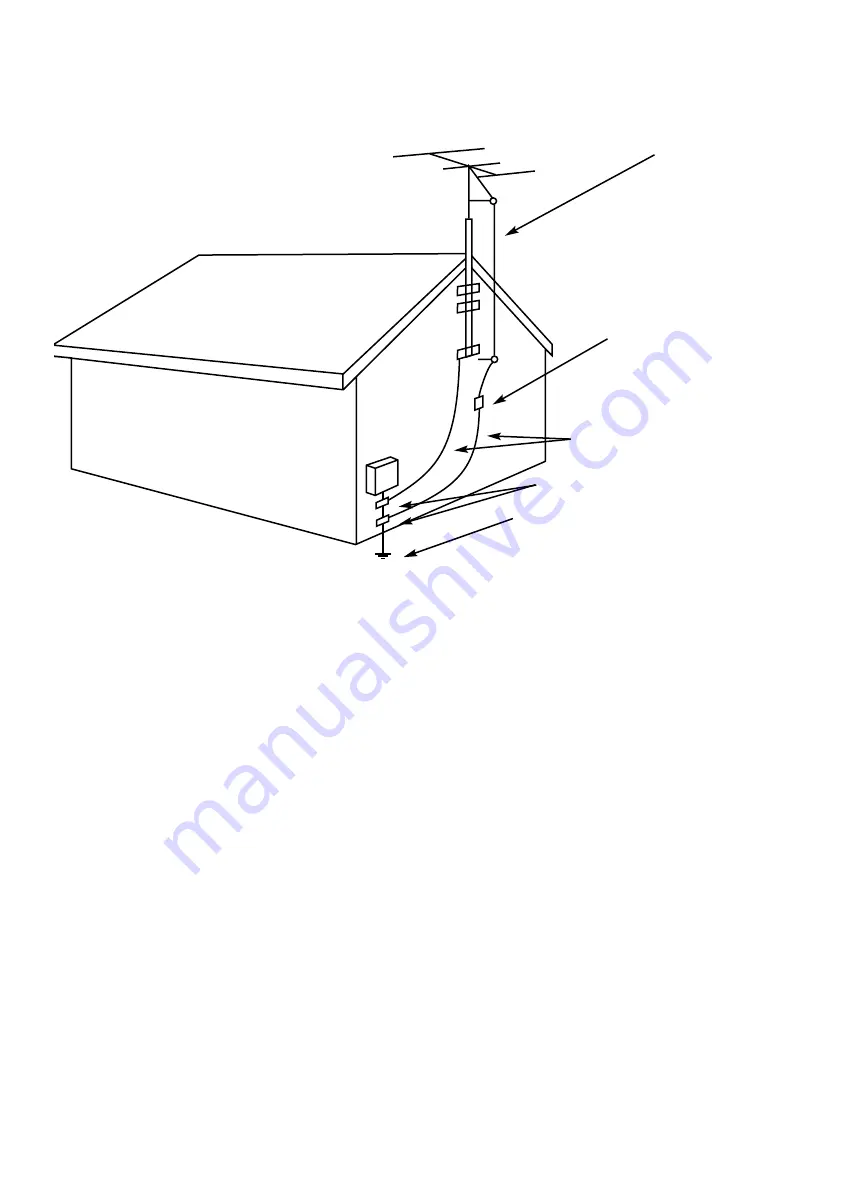
8
ANTENNA
LEAD-IN
WIRE
ANTENNA
DISCHARGE UNIT
(NEC SECTION 810-20)
GROUNDING CONDUCTORS
(NEC SECTION 810-21)
GROUND CLAMPS
POWER SERVICE GROUNDING
ELECTRODE SYSTEM
(NEC ART 250, PART H)
Example of Antenna Grounding
as per National Electrical Code
1.1
IMPORTANT SAFEGUARDS
15. Nonuse Periods –
The power cord of the prod-
uct should be unplugged from the outlet when left
unused for a long period of time.
16. Object and Liquid Entry –
Care should be taken
so that the objects do not fall and liquids are not
spilled into the enclosure through the openings.
17. Outdoor Antenna Grounding –
If an outside
antenna is connected to the receiver, be sure the
antenna system is grounded so as to provide some
protection against voltage surges and built-up
static charges. Article 810 of the National Electrical
Code, ANSI/NFPA 70, provides information with
regard to proper grounding of the mast and
supporting structure, grounding of the lead-in
wire to an antenna-discharge unit, size of ground-
ing conductors, location of antenna-discharge
unit, connection to grounding electrodes, and
requirements for the grounding electrode (see
above figure).
18. Damage Requiring Service –
The
product should be serviced by qualified service
personnel when:
a.
The power supply or the plug has been
damaged; or
b.
Objects have fallen on, or liquid has been
spilled into, the product; or
c.
The product has been exposed to rain; or
d.
The product does not appear to operate
normally or exhibits a marked change in
performance; or
e.
The product has been dropped, or the
enclosure damaged.
19. Servicing –
The user should not attempt to ser-
vice the product beyond what is described in the
operating instructions. All other servicing should
be referred to qualified service personnel.
Note To CATV System Installer:
This reminder is provided to call the CATV system
installer’s attention to Article 820-22 of the NEC
that provides guidelines for proper grounding and,
in particular, specifies that the cable ground shall be
connected to the grounding system of the building,
as close to the point of cable entry as practical.









































